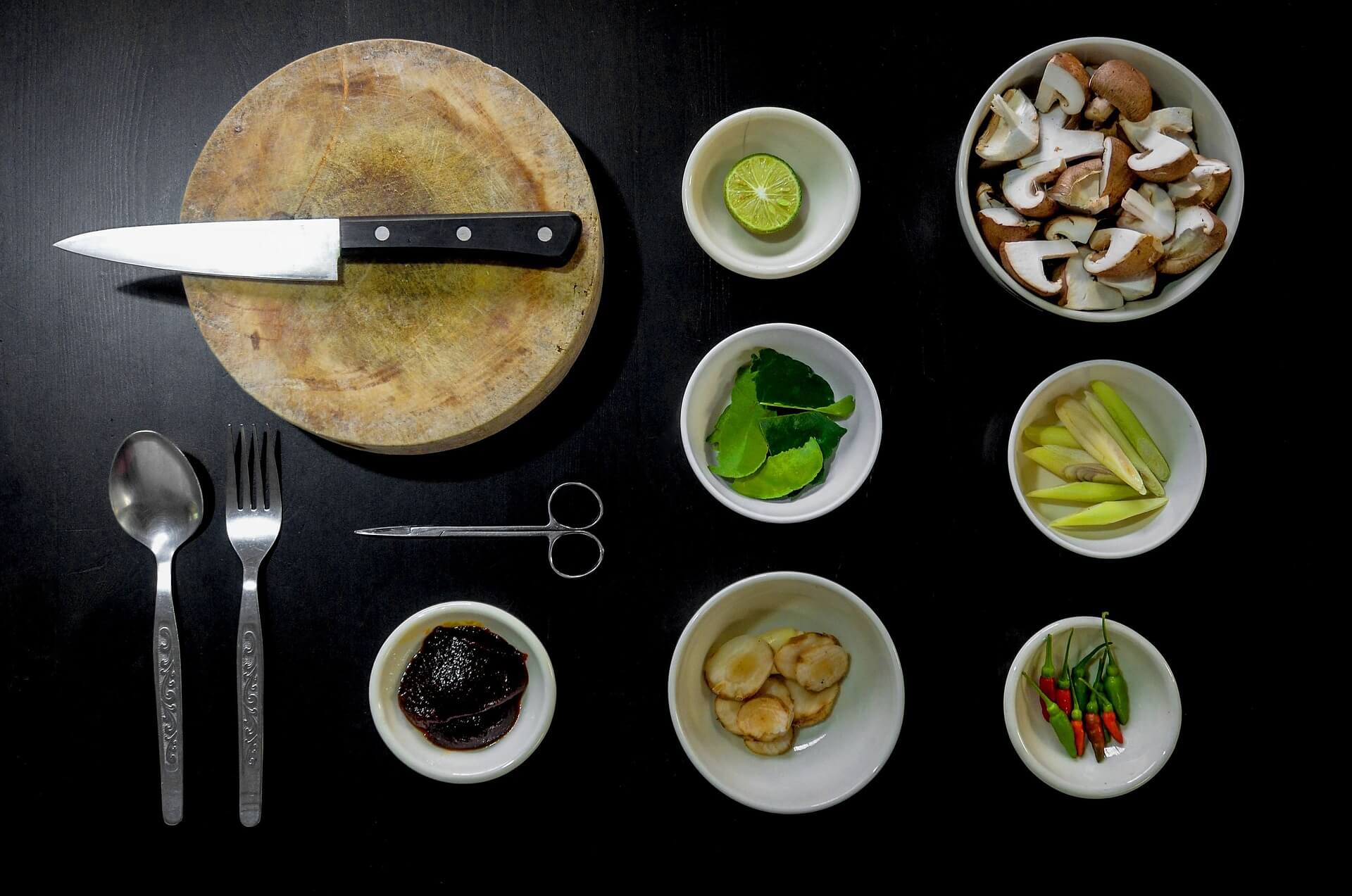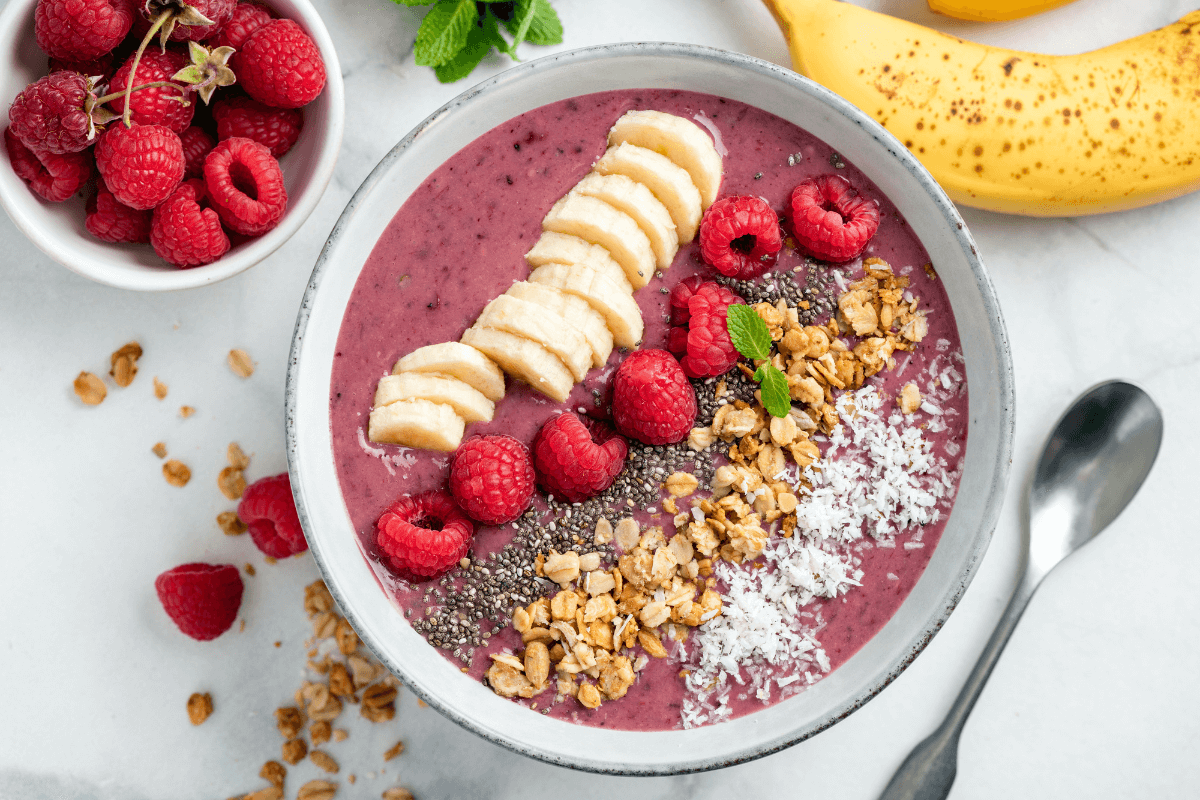
This guest post is from Misbah Haque of The Airborne Mind.
When I first started my fitness journey, I absolutely cringed at the thought of cooking. I had put together meal guides for myself many times, but when it came to execution, I would fall off the wagon after a week or so. Then I realized, “Okay, you have to meal prep if you want to stick to this. Great. How do I even begin to do that?” Trust me, I was the absolute beginner. Broil? Grill? Sautee? What in the world did all this mean?! What pushed me over the edge?
Falling off the boat over and over was discouraging for sure. In all honesty, I’m the type of person who really could eat whatever I wanted, and you wouldn’t be able to tell by my appearance. Sounds awesome, right? Not really. Aesthetically, it didn’t make much of a difference, but internally I knew something was off. My energy levels were low. My stress levels were higher. My performance had finally hit a plateau. I wasn’t recovering fast enough. This was a problem. I get to deal with tons of CrossFitters, weightlifters, and fitness enthusiasts on a daily basis. If I’m not performing my best, I’m doing a disservice to these clients, and that’s what was eating me alive.
When will I have time to cook all this food? Work, training, school, kids, soccer games, social gatherings, family dinners, holidays, weekends...the list goes on. There’s so much going on in our day to day lives, so it’s a completely normal question to ask. Meal prepping is a top contender for making your life easier. Although, it only lasts if it feels manageable to you. You’ve probably heard this term thrown around in conversation, but if you haven’t, it basically means that you are planning and prepping your meals in advance for the week. This means cooking items in bulk and eating leftovers. The question remains, how do we meal prep in the most efficient way possible?
That’s why I’ve developed a system for you. Something easy you can start doing right away to make your life easier. Anytime you feel overwhelmed, you have this to fall back on. This is the four-hour meal prep split up into two days, Sunday & Wednesday. Most of the prepping & decision making is done on Sunday, taking about three hours. Wednesdays are easy because you have a blueprint to quickly execute, which should take about an hour at most.
Advertisement
Meal prepping is all about you. It depends on how much time you have to dedicate to prepping and how complicated you want to get. Are you looking to make exquisite four-course meals every night? Or do you want to keep it simple yet tasty? If you are a beginner to meal prepping, I highly suggest keeping it simple by sticking to recipes with few ingredients while using efficient cooking techniques.
There is something psychologists refer to as “decision fatigue”. Although willpower is renewable, it is a limited resource. Think of it as a battery. The more decisions you make, the easier it becomes to make cloudier judgments. President Obama doesn’t make decisions about eating or what he wears, simply because there are too many other decisions of higher importance that he needs to make. You’ve just gone through a long day at work. Meetings, phone calls, and all sorts of running around. The workday is finally over and it’s time to sit in rush hour traffic. Think about when you come home afterward and you have to think about:
- What should I make for dinner?
- Who else am I cooking for?
- How long is this going to take?
- What ingredients do I need?
- Will I have any time to relax?
It may sound silly, but this is what makes it easy for us to fall into convenience foods and just grab Chick-fil-A on the way home. You can prevent relapses with your diet by having your decisions mapped out so you can focus on execution. Let’s face it, blueprints such as meal guides are great. What really matters is the execution of the blueprint with consistency. If there’s no system in place, you’re much more likely to become overwhelmed by the whole process, and that is exactly what we are trying to avoid.
Becoming overwhelmed will lead to your brain linking pain with the process of meal prepping. It’s commonly referred to as “neuro-association”. Your nervous system will instantly associate pain or pleasure with a process. That’s why we want this system to be as manageable as possible, so you feel great about looking into your fully stocked fridge. If you can change what you link pain and pleasure to, you are ready to instantly make a change and hold on to it.
You could definitely meal prep on a Sunday for the entire week if you really wanted. From personal experience, I wouldn’t recommend it. At least not in the very beginning. Certain foods may go bad or get soggy. It will take up a lot of time. Again, it depends on the complexity and number of meals you decide to prep.
Advertisement
Saving Time and Energy
The four hours you are investing in meal prepping is going to improve the quality of your time throughout the week. My other barrier to adopting healthier eating habits was the fact that I didn’t enjoy eating. Everyone thinks I’m extremely weird when I say that, but I was so rushed with all the other tasks at hand that I wouldn’t take the time to sit down and just eat. By prepping in advance, you have more time to savor your food, and turn it into a bit of a ritual. You’ll save 8+ hrs throughout the week that you can use to be more present and enjoy the things you love.
For example:
Getting Ready For The Prep
Advertisement
The amount of prep depends on how much time you have to dedicate and how detailed you want to get. Do you want to make exquisite cuisines or keep it simple yet tasty?
Next, ask yourself, who are you making this for? Everything I’ve listed below can be scaled up if you’re cooking for a significant other or the rest of your family as well.
How many meals do you want to make? Write this number down categorized by Breakfast, Lunch, Dinner, and Snacks. I’m more of a night owl, so my mornings are somewhat rushed and I try to squeeze every minute I can out of my alarm clock. If I’m running out the door with a donut or croissant, that might mean that breakfast is a high priority for me. On the other hand, you might work late, and come home exhausted afterward. Dinner may be your high priority meal.
Working Against Gravity does a great job of doing all the numerical stuff with calculating your macros. You still have to weigh and log your food. This gets really easy over time once you get into the swing of things. Have your food scale nearby so you can be as accurate as possible.
Your ingredients are important. Write down a shopping list for all the items you will need. Take it a step further by mapping out what meals you actually want to make. Remember, this doesn’t have to be complicated. We’re not getting ready to perform on the Food network here. Pick meals that are manageable for you. I try to use meals that I can have for dinner one night, but leftovers for lunch. This is a huge time saver for me.
Advertisement
You would laugh at my food journal. Once I figure out a handful of items I love to eat, I’ll stick with them until I can no longer stand the thought of eating another meal with those items. I don’t recommend that you go to that extreme, but keep it simple. Keep it manageable. Here are some suggestions:
- Protein: Chicken breast, ground beef, ground turkey, flank steak, turkey breast, roast beef, salmon, tilapia, tuna, shrimp, eggs, egg whites
- Starches: Sweet potato, oats, quinoa, pasta, brown rice, whole-grain tortillas, and bread
- Healthy Fats: Almonds, walnuts, pecans, pistachios, pumpkin seeds, peanut butter, almond butter, olive oil and coconut oil
- Veggies/Fruits: Spinach, kale, arugula, green beans, mushrooms, asparagus, broccoli, cauliflower, cucumber, red peppers, orange peppers, yellow peppers, carrots, tomatoes, zucchini, pineapple, apples, grapes, strawberries, and bananas
Tupperware. You will need lots of these. The first time I meal prepped, I looked like a madman with all the different shapes & sizes of Tupperware containers I was using. My fridge felt more crowded than it needed to be. Find something that is BPA free, microwave safe, airtight, leak free, freezer safe, and easily stackable so your fridge doesn’t look like it’s about to throw up. There are so many options out there, but I like something like Fitpacker.
Go shopping! A wise person once told me that you should keep to the perimeters of the grocery store. By now, your ingredient list is good to go, and you have a sense of what you might want to make for the week.
The Process
We’ve gotten organized, weighed our food, and have a game plan. Now it’s time to execute. The key is not to feel rushed. Put on some music, turn on the football game, or listen to some stand-up comedy.
Advertisement
Take your macros (proteins, carbohydrates, and fats) and break them down into meats, starches, veggies/fruits, and fats. By “starches”, I’m referring to pasta, sweet potatoes, rice, or anything that might need to be cooked.
Meats come first, just because it’s nice to get them out of the way. Let’s say you’re making a bunch of chicken breast for the week. You can marinate these in a few different ways so you’re getting some different flavors. I personally can stick with one flavor for the whole week, and maybe switch it up the next week. If you find yourself getting bored of the flavor, you might want to use a few different seasonings.
You have a few options as to how you want to cook your meat. Bake, fry, or grill. My personal favorite is to use the grill as often as I can. I enjoy the process for some reason and can get a lot more cooked at once. Baking or roasting in the oven is my next go-to. Frying or cooking on the stove is my last preference. There are pros & cons to all three options. It just comes down to convenience & preference. Here are some tips to keep in mind for cooking the meat:
Grill - Make sure it is hot enough before cooking so it doesn’t take longer to cook, which leads to your meat being exposed to smoke longer.
Bake - Add a little water to the bottom of the pan before roasting. It will help avoid excessive smoke when it gets to higher temperatures.
Advertisement
Fry - Make sure the oil is hot enough so a crispy shell can be formed around the meat. It will also save time.
Now it’s time to get the starches rolling. Rice, sweet potatoes, pasta or anything that needs to be boiled is going to be set up now. I can get the rice boiling & set my timer so I can now work on sweet potatoes. Chop & season to your liking, and place on a baking tray. Once all the meat is done, there’s no time being wasted, and you can pop it right in.
It’s veggie time! This has turned into my favorite because it makes me feel refreshed to see such colorful vegetables. Clean everything thoroughly, cut them to your liking, and season them if you’d like. You can either cook them in the oven, fry them on the stove, or just keep them raw. Regardless of how you like to eat them, I’d recommend cutting all your veggies up for the whole week. It’s something easy that you can do while waiting for everything to cook, and requires no effort when snacking on them throughout the week. Let’s say you feel spontaneous on Thursday and want to stir-fry peppers, carrots, and broccoli. You’re more likely to feel pleasure while you’re doing so because you’ve eliminated the step of cleaning and cutting.
Next up is your fats and snacks. This is easy for the most part because you will mainly just have to portion all the nuts & seeds in sandwich bags so they are easy to grab and go. If you eat any type of protein bars, you can also portion them out here.
By doing as much of the planning & prepping on Sunday as I can, my Wednesday prep is only about an hour long at the most. You may need to cook more meat, but everything is already portioned out, so it’s not a headache. If you didn’t on Sunday, you can chop up your veggies while your rice or starches are boiling. Follow the same process as Sunday.
Advertisement
Storing
When portioning & storing the vegetables, wait until they are completely dry before you put them away. They WILL get soggy if you put them away while they are wet. No one likes soggy vegetables. Depending on the vegetable of your choice, something that contains a lot of water will not last as long.
Organize in your fridge however you’d like, but a cool way to do it is by days. Label each container “M - Lunch, M - Dinner, T - Lunch, etc”.
Long-Term Success
Meal prep is all about keeping it manageable for yourself. Everything I listed above is just a suggestion from personal experience. Feel free to customize this however you’d like to make it suitable for your needs. Remember our neuro-association concept with meal prepping. If this becomes a pain point for you, it won’t work in the long run. Turn it into a refreshing experience for yourself. The pleasure comes from you looking in the fridge after all your hard work and seeing it fully stocked. It’s a work of art, so pat yourself on the back. This is a personal thing, but I like to take a second and be grateful that I have such an abundance of food in the first place. It’s easy to forget that not everyone has the privilege to afford healthy meals, let alone stock up for days in advance. For every meal I make, I try to donate a dollar to Feeding America. They distribute 11 meals to people facing hunger for every dollar, which is incredible!
Advertisement
Everything we did above was planned and routined. Leave room for spontaneity throughout the week. Maybe have certain items in mind to spice things up when you are in the mood. This can range from spices such as cinnamon, hot sauce, fresh lemons all the way to banana ice cream or a Quest bar sandwich with peanut butter. For me, the second that taste starts to get dull, I know I have to add some flavor or I may fall off the wagon.
Everything does not have to be precooked. We can shave downtime by just portioning meats & veggies if we wanted to. Taste is super important to me. If I’m going to put something in my body, it better taste good. This is also why I don’t recommend cooking for the whole week at once. If it doesn’t turn out how you expected, you’re stuck with food you won’t enjoy, and it will ruin the whole experience for you.
Once you are all done, it’s time to reflect. What was your favorite part of the process? What was the biggest challenge on your mind? How can you make it even easier next time? You can use these reflections to tweak your future meal preps as necessary. Over time, it becomes natural because you realize how valuable the benefits are. We’re keeping it simple, but as you get advanced you can refine your strategy based on your experience and observations.
Schedule a Free Intro Call
Working Against Gravity has led the macro tracking and health space for over a decade. Our team doesn’t just understand the science of nutrition—we’ve spent years mastering the art of tailoring it to fit your life. That means no cookie-cutter plans, just real strategies that have worked for over 30,000 people.
Schedule a free call with our team to learn how working with a 1-on-1 WAG coach will help you reach your goals.



